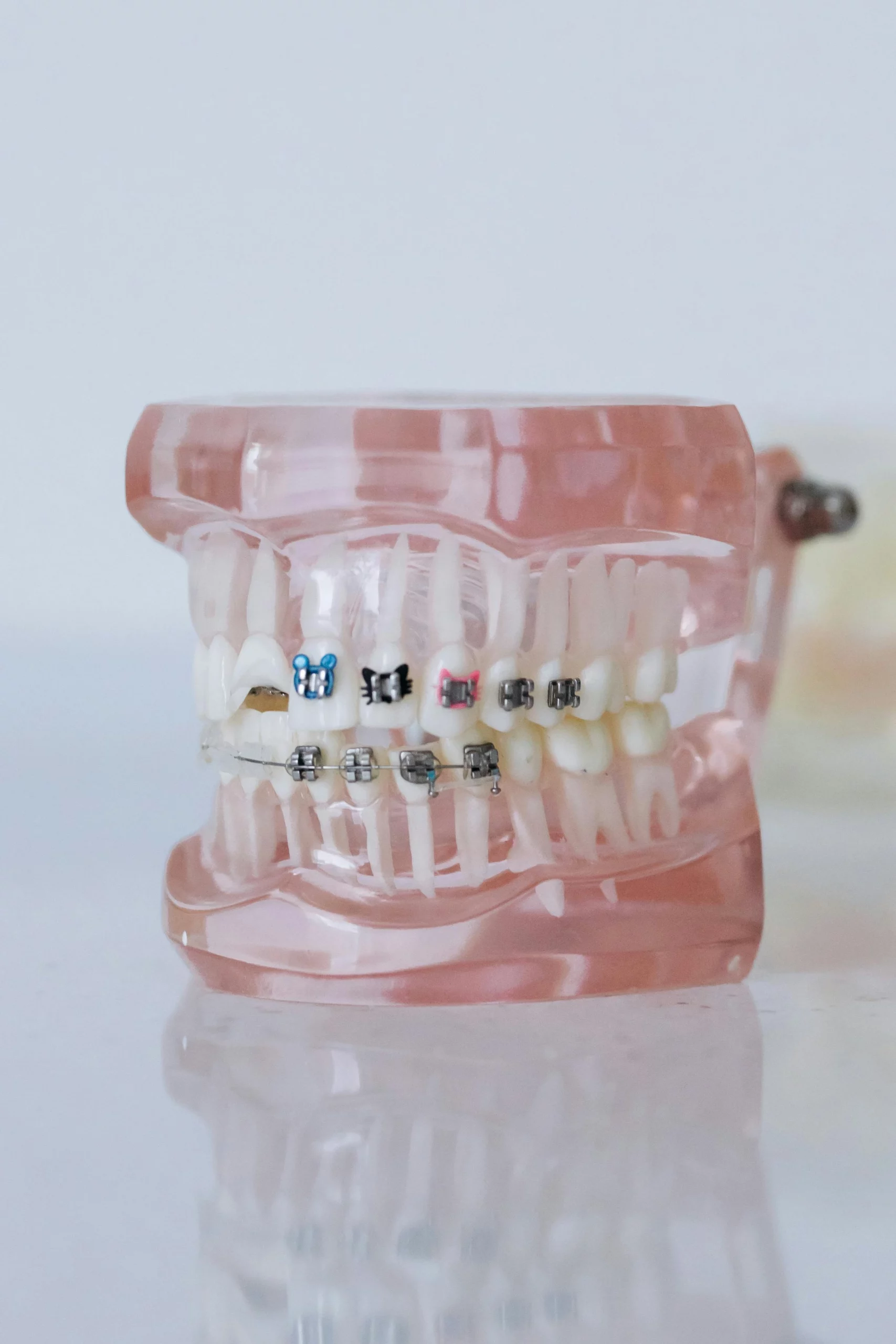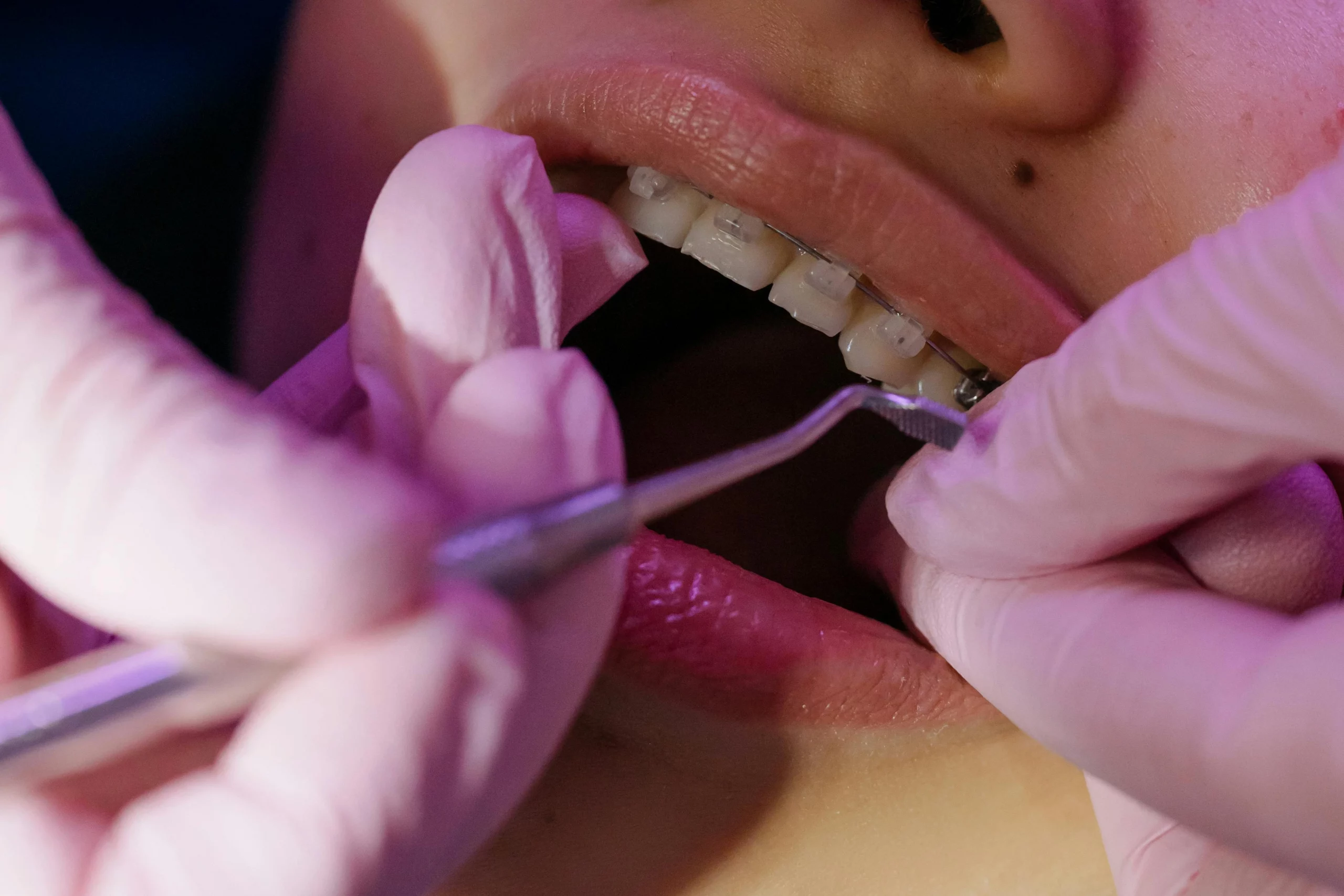Dental braces remain one of the most effective ways to straighten teeth and correct bite problems, helping both teens and adults achieve healthier, more confident smiles. Whether you’re considering braces for your child or yourself, it’s normal to have questions about what treatment involves, how long it will take, and how to care for your braces properly. With the right guidance and a personalized approach, orthodontic treatment can be a comfortable and rewarding journey.
In this article, we’ll break down the essentials of braces from the different types to daily care tips to help you make informed decisions every step of the way.
What Are Dental Braces and How Do They Work?
Dental braces serve as specialized orthodontic devices, consistently utilized to correct dental misalignments such as crowding, spacing, overbites, underbites, and crossbites. These appliances exert continuous, gentle pressure on the teeth and jaws, encouraging gradual bone adaptation and movement. Over time, this process effectively guides each tooth into its intended position. Ultimately, dental braces enhance both the aesthetic appearance of the smile and the functional alignment of the bite, contributing to improved overall oral health.
Traditional Braces vs. Modern Alternatives: What’s Best for You?
Traditional metal braces are what most people picture—stainless steel brackets bonded to each tooth and connected by wires. While highly effective and reliable, many patients now opt for more discreet alternatives. Ceramic braces offer the same function but use tooth-colored materials for a less noticeable appearance. For eligible cases, clear aligners (like Invisalign) provide a nearly invisible option that can be removed for eating and brushing. Choosing the right type depends on your alignment needs, lifestyle, and preferences. Your orthodontist will help you weigh the pros and cons of each option to determine the best path forward.
The Basic Components of Braces: Brackets, Wires, and Bands

Braces, regardless of their specific type, consist of several essential components that function collaboratively to realign teeth:
The brackets—small, square attachments—are bonded directly to each tooth. They serve as foundational anchors, ensuring the stability of the overall orthodontic system.
The archwire, a slender metal wire threaded through the brackets, exerts consistent, gentle pressure on the teeth. This gradual force is responsible for shifting teeth into their proper positions over time.
Bands or ligatures, which may be elastic or metal, are utilized to secure the archwire to each bracket. In certain situations, additional elastic bands are incorporated to provide targeted directional force, particularly when addressing bite alignment.
Auxiliary components, such as coil springs or specialized rubber bands, might also be introduced, depending on the patient’s orthodontic requirements. These supplementary tools play a role in correcting jaw position or closing challenging gaps.
These elements operate as an integrated system, steadily enhancing both the function and aesthetics of a patient’s smile.
How Long Does It Take to Get Results with Braces?
Braces don’t offer instantaneous results; rather, achieving a properly aligned smile is a gradual process requiring sustained effort and adherence to professional guidance. The movement of teeth and underlying jawbone occurs incrementally, as gentle pressure is applied over time. Typically, orthodontic treatment spans anywhere from 18 to 36 months, although the precise duration is influenced by factors such as the severity of misalignment, the patient’s age, and their commitment to following orthodontic instructions.
Consistent attendance at scheduled appointments and timely adjustments to the braces are essential to ensure optimal progress. While the process demands patience and diligence, the ultimate rewards—including enhanced oral health, improved bite function, and increased self-confidence demonstrate that the investment of time and effort yields significant long-term benefits.
Average Treatment Time and Factors That Affect Duration
Typically, individuals wear braces for approximately 18 to 24 months, though the duration can vary. Some patients may complete treatment more quickly, while others require additional time. The length of treatment is influenced by several factors including:
- The severity of your misalignment
- Your age and bone density
- How well you follow your orthodontist’s instructions
- The type of braces you choose
Mild cases may be completed in as little as 6 months, while complex bite corrections might take up to 3 years.
Milestones to Expect Throughout Your Treatment
After getting your braces on, you’ll visit your orthodontist every 4 to 8 weeks for adjustments. These appointments are crucial—they ensure your teeth are progressing properly and that the right amount of pressure is maintained.
Some milestones to expect:
- Initial soreness during the first few days
- Noticeable movement within 1 to 2 months
- Midpoint evaluation to track changes and adjust goals
- Final detailing to perfect alignment before braces come off
Once your braces are removed, you’ll wear a retainer to maintain your results and prevent relapse.
How to Care for Your Braces: Tips for Maintaining Oral Hygiene

Wearing braces, honestly, turns your mouth into a bit of an obstacle course for food particles and plaque. The brackets and wires create extra nooks where debris just loves to settle in, and if you slack on cleaning, you’re basically inviting cavities, gum inflammation, and some awkward-looking stains around those brackets. That’s why it’s not just recommended but genuinely necessary to brush after every meal. Tools like floss threaders or water flossers?
Absolute essentials for navigating between teeth where normal floss just won’t cut it. And, yeah, regular dental check-ups—don’t even think about skipping those. Building a solid oral hygiene routine while you’ve got braces seriously pays off. When the hardware finally comes off, your teeth will look and feel way better for it.
Cleaning Techniques to Prevent Plaque Buildup
Maintaining proper oral hygiene with braces admittedly requires more diligence than usual, but the benefits for long-term dental health are significant.
To start, it’s advisable to brush after every meal, using a soft-bristled toothbrush paired with fluoride toothpaste. Make sure to angle the brush so it can effectively clean around the brackets and wires, rather than simply brushing straight on.
For flossing, traditional methods can be challenging; therefore, using interdental brushes or a water flosser is often recommended to reach between teeth and around the braces themselves.
Additionally, rinsing with an antibacterial mouthwash helps reduce plaque accumulation.
Orthodontists may also suggest a special fluoride rinse for added protection or recommend professional cleanings every three to four months to maintain optimal oral health throughout your orthodontic treatment.
Avoiding Foods That Could Damage Your Braces
Certain foods can break or dislodge brackets and wires. Try to avoid:
- Sticky items like gum or caramel
- Hard foods like popcorn kernels, ice, and nuts
- Crunchy fruits or veggies—cut them into small pieces instead
Being mindful of your diet helps avoid emergency repairs and keeps your treatment on track.
Why GP Dental Is Your Trusted Partner for Braces Treatment

Selecting an appropriate dental team holds equal significance to the choice of orthodontic appliances themselves. At GP Dental, practitioners blend advanced clinical knowledge with genuine, individualized attention, fostering a treatment process that is both effective and considerably more comfortable for patients.
Expert Orthodontists with Years of Experience
Our orthodontic specialists have decades of combined experience treating cases ranging from mild crowding to complex jaw misalignment. We use advanced diagnostic tools to create customized treatment plans that prioritize comfort and results. Whether you’re exploring braces for yourself or your child, our team takes the time to answer questions, explain options, and walk you through every stage of care with clarity and confidence.
Customized Treatment Plans to Ensure the Best Results
At GP Dental, no two treatment plans are the same. We take into account your age, dental history, facial structure, and goals when designing your braces experience. Our clinic also offers flexible scheduling, digital impressions (no messy trays), and payment plans to make treatment accessible and stress-free. We believe everyone deserves a smile they feel proud of—and we’re here to make that happen, one patient at a time.
Frequently Asked Questions (FAQs)
1. Do braces hurt?
Braces often cause mild soreness or pressure, especially right after they’re first applied or tightened. This discomfort is a natural sign that your teeth are starting to shift. Most people find the sensation manageable and it usually fades within a few days. Eating soft foods and taking over-the-counter pain relievers can help ease any tenderness. As your mouth adjusts, future adjustments tend to feel less intense.
2. Can adults get braces too?
Absolutely. Many adults choose to get braces to address bite problems, crowding, or gaps they’ve lived with for years. Modern orthodontic options like clear aligners and tooth-colored ceramic braces offer more discreet solutions than ever before. As long as your teeth and gums are in good health, age is not a limitation. In fact, adult orthodontic treatment can boost both confidence and oral health.
3. How often do I need to visit the orthodontist during treatment?
You’ll typically visit your orthodontist every 4 to 8 weeks for regular adjustments. During these checkups, your provider will assess how your teeth are shifting, tighten or replace wires, and make any necessary changes to your treatment plan. These visits are crucial for staying on track and ensuring your braces are working effectively. Missing appointments can slow down your progress, so it’s important to stick to your schedule as closely as possible.
4. Will I need to wear a retainer after braces?
Yes, retainers are essential after braces. They hold your teeth in their new positions while the surrounding bone and soft tissue stabilize and adapt. Most patients wear their retainer full-time initially, then gradually switch to wearing it only at night as advised by their orthodontist. Skipping this step can cause your teeth to drift out of alignment, undoing the hard work of your orthodontic treatment. Consistent retainer use protects your investment in a straighter, healthier smile.
5. What’s the best age to get braces?
The ideal age for braces typically falls between 10 and 14, a time when most permanent teeth have erupted and the jaw is still growing. This window allows orthodontists to guide teeth and jaw development more efficiently. However, adults of any age can still benefit from braces, as long as their teeth and gums are healthy. Orthodontic readiness depends more on dental development than age alone, which is why early evaluation often around age 7 is key to determining the best timing for treatment.
Ready to take the next step toward a straighter, healthier smile? Book your braces consultation with GP Dental today. Whether you’re a teen starting orthodontics or an adult revisiting your smile goals, our team is here to support you with skill, care, and custom solutions.
We’ll help you choose the best type of braces, explain the treatment plan, and set you up with flexible payment options that fit your budget. Your new smile is closer than you think—schedule your visit now and let’s make it happen.


